Grudgematch: ATI Radeon X1950 XTX vs. Nvidia GeForce 7900 GTX
We run ATI's Radeon X1950 XTX and Nvidia's GeForce 7900 GTX through the gauntlet to figure out which single-GPU behemoth you should buy.
ATI and Nvidia forever remain locked in a world of one-upmanship. If one company releases a 600MHz card, inevitably, a month down the road, the other will release a 650MHz card or start bundling 400MHz cards with a free game, more memory, or a tasty chicken dinner. ATI's new flagship part, the Radeon X1950 XTX is the latest salvo in the ongoing battle. The Radeon X1950 XTX is an improved version of the Radeon X1900--the new part has the same core speed as its predecessor, but now comes with 512MB of ridiculously fast 2000MHz GDDR4 memory. The new memory boosts overall memory bandwidth, which the speedy Radeon X1950 XTX GPU can put to good use.
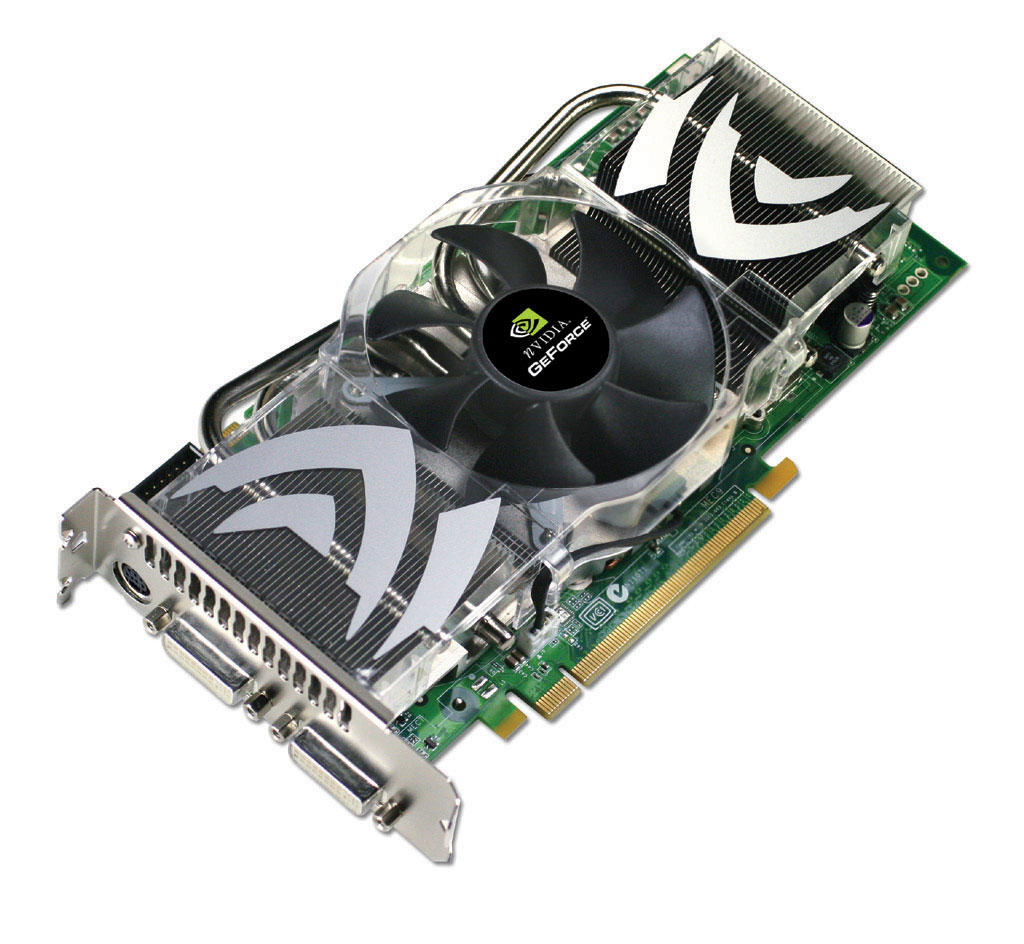 | 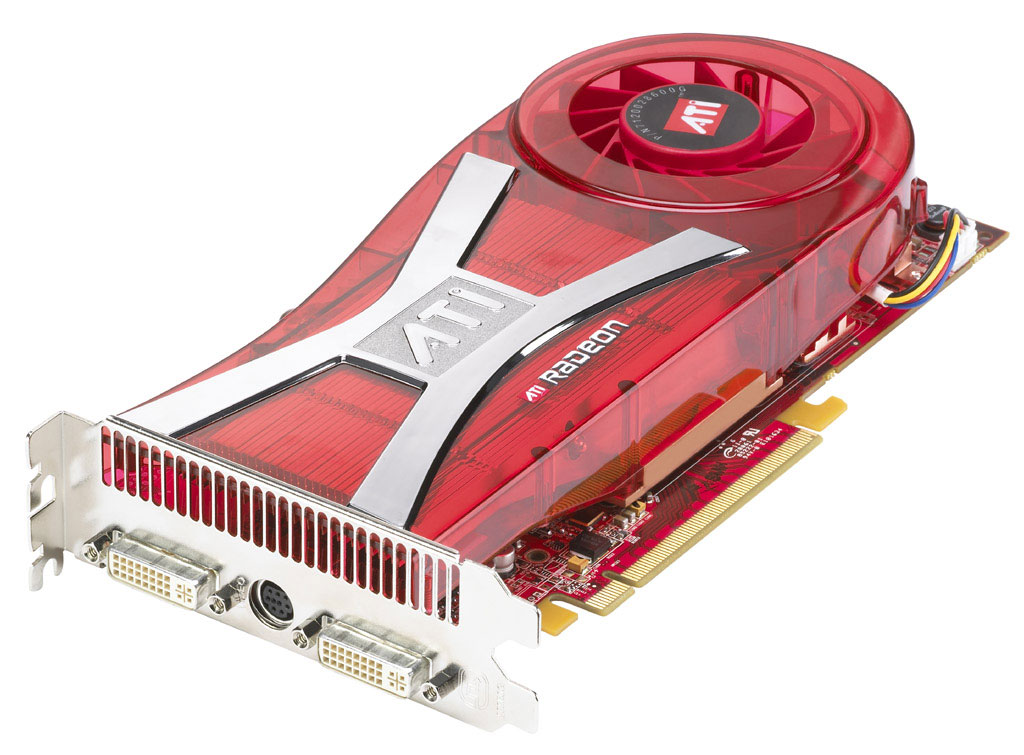 |
The $449 Radeon X1950 XTX doesn't exactly qualify for budget status. Nvidia's nearest offering in terms of price turns out to be the GeForce 7900 GTX. Like the X1950, the GeForce 7900 GTX also sports large amounts of quick memory and an equally speedy core. You can purchase a Radeon X1950 XTX card and a matching CrossFire Edition card for a dual-card setup and you can also get two GeForce 7900 GTX cards for a dual-card SLI setup. However, we're focusing on single GPU performance in this story, but we plan on exploring dual-GPU performance in an upcoming video card round-up.
GeForce 7900 GTX | Radeon X1950 XTX | |
| Core Clock | 700/650MHz | 650MHz |
| Memory Clock | 1600MHz | 2,000MHz |
| RAM Size | 512MB | 512MB |
| Pixel Shaders | 24 | 48 |
| ROPs | 16 | 16 |
| Vertex Shaders | 8 | 8 |
| Texture Units | 24 | 16 |
| Manufacturing Process | 90nm | 90nm |
| Transistor Count | 278M | 384M |
We put together five tests to check out which card would buckle under the pixel-pushing pressure. We ran all of our tests at resolutions of 1600x1200 and higher, and we also took a few screenshots to see how well each card rendered our test games. Read on to see which card came out on top.
Quake 4
Image Quality
The images produced by the Radeon and the GeForce appeared virtually identical with both systems cranked to 1600x1200 with 4x antialiasing and 16x high anisotropic filtering. We found it difficult to make a judgment either way--Quake 4 looked great on both cards.
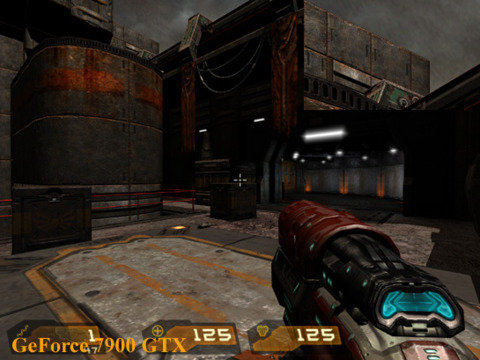
Performance
Quake 4, a Doom 3 based game, is usually an Nvidia benchmark stronghold, but, in a surprising turn of events, the Radeon X1950 pummeled the GeForce 7900 GTX in our Quake 4 grudge match. The game is normally an easy win for the GeForce cards, but ATI's recent drivers and hardware improvements have nullified Nvidia's lead. The Radeon X1950 outperformed the GeForce by up to 17 percent.
Verdict
With image quality so close, and the dominating performance of the Radeon X1950 XTX, we're going to have to hand this round to ATI.
System Setup:
AMD Athlon 64 FX-62 CPU, Asus A8N32 SLI Deluxe, Asus A8R32-MVP Deluxe Motherboard, 1GB (512MB x 2) Corsair XMS Memory, 160GB Seagate 7200.7 SATA Hard Disk Drive, Windows XP Professional SP2.
Graphics Cards: GeForce 7900 GTX, Radeon X1950 XTX.
Graphics Drivers: ATI Catalyst beta 8-282-060802a-035384E , Nvidia ForceWare 91.31.
Half-Life 2 Lost Coast
Image Quality
Half-Life 2 Lost Coast represents the performance of games based on Valve's Source engine, which powers the popular Counter-Strike: Source shooter. Valve's engine allows both video cards to enable high-dynamic range lighting and antialiasing at the same time. We cranked the resolution to 1600x1200 and enabled 4x antialiasing with 16x high-quality anisotropic filtering. The resulting images proved to be very similar. We noticed a few minor rendering differences, but we attributed those to the ever-shifting lighting.
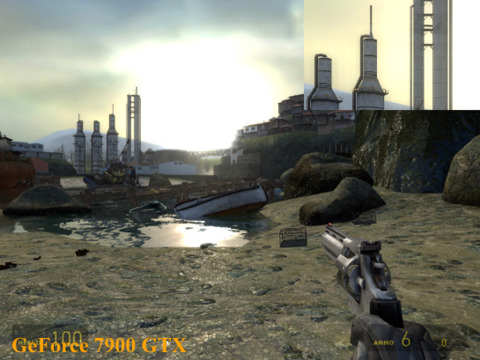
Performance
Identical images, followed up by nearly identical performance. The GeForce 7900 GTX pulled in at a frame slower on the lower-resolution test, but then it was neck and neck with the Radeon X1950 XTX once we cranked the resolution to 1920x1440.
Verdict
We're going to have to call a tie here. Neither card pulled ahead of the other in performance or image quality.
System Setup:
AMD Athlon 64 FX-62 CPU, Asus A8N32 SLI Deluxe, Asus A8R32-MVP Deluxe Motherboard, 1GB (512MB x 2) Corsair XMS Memory, 160GB Seagate 7200.7 SATA Hard Disk Drive, Windows XP Professional SP2.
Graphics Cards: GeForce 7900 GTX, Radeon X1950 XTX.
Graphics Drivers: ATI Catalyst beta 8-282-060802a-035384E , Nvidia ForceWare 91.31.
Guild Wars: Factions
Image Quality
Guild Wars: Factions, regardless of whether it's called an MMORPG by some or an RPG by others, is a solid, popular, and beautiful game. Both cards output an excellent image here. We zoomed in on shots to try to find major differences, but didn't find anything noteworthy to report at our 1600x1200, 4xAA, 16xAF test setting.
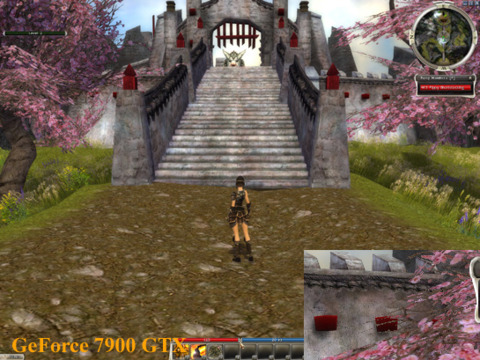
Performance
Both cards output nearly identical results in Guild Wars. We can't call either card the victor here, as the test itself can vary by up to three frames per second in repeatable runs.
Verdict
With both image quality and performance nearly equal, the game resulted in a tie for both cards. System Setup:
AMD Athlon 64 FX-62 CPU, Asus A8N32 SLI Deluxe, Asus A8R32-MVP Deluxe Motherboard, 1GB (512MB x 2) Corsair XMS Memory, 160GB Seagate 7200.7 SATA Hard Disk Drive, Windows XP Professional SP2.
Graphics Cards: GeForce 7900 GTX, Radeon X1950 XTX.
Graphics Drivers: ATI Catalyst beta 8-282-060802a-035384E , Nvidia ForceWare 91.31.
Oblivion
Image Quality
Oblivion is one of those games that ATI loves to brag about--high-dynamic range lighting and antialiasing! The game won't allow you to run antialiasing and HDR together by default, but ATI's soon-to-be WHQL-approved driver will allow you to do just that for amazing image fidelity. The jagged edges are very noticeable in the Nvidia image, while the ATI output is nice and smooth.
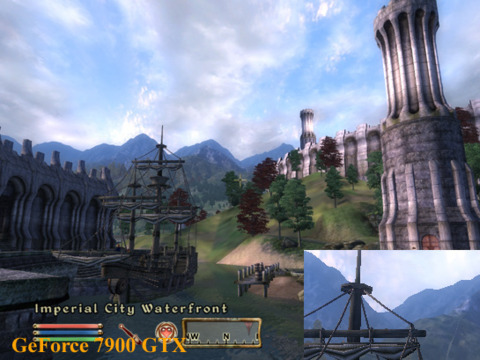
Performance
ATI wins by a hair if anisotropic filtering is enabled. The Nvidia card couldn't run the Oblivion test with HDR and antialiasing enabled at the same time.
Verdict
The Radeon X1950 XTX wins in both image quality and performance in Oblivion.
System Setup:
AMD Athlon 64 FX-62 CPU, Asus A8N32 SLI Deluxe, Asus A8R32-MVP Deluxe Motherboard, 1GB (512MB x 2) Corsair XMS Memory, 160GB Seagate 7200.7 SATA Hard Disk Drive, Windows XP Professional SP2.
Graphics Cards: GeForce 7900 GTX, Radeon X1950 XTX.
Graphics Drivers: ATI Catalyst beta 8-282-060802a-035384E , Nvidia ForceWare 91.31.
3DMark06
Image Quality
3DMark06 isn't a game, but it remains a valid benchmark by which to gauge theoretical game performance because it supports both Shader Model 3.0 and dual-core CPUs. 3DMark06 also makes use of high-dynamic range lighting, but Nvidia's cards cannot run the test with antialiasing enabled. As such, ATI easily won in the image-quality department.
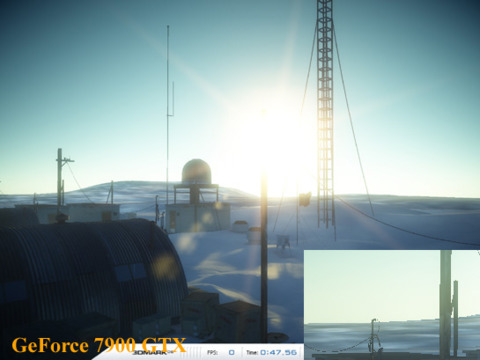
Performance
The two cards ran neck and neck with antialiasing disabled, but the GeForce couldn't compete once we started running the test with antialiasing.
Verdict
As in Oblivion, ATI takes the 3DMark06 victory because of its ability to perform antialiasing with high-dynamic range lighting.
System Setup:
AMD Athlon 64 FX-62 CPU, Asus A8N32 SLI Deluxe, Asus A8R32-MVP Deluxe Motherboard, 1GB (512MB x 2) Corsair XMS Memory, 160GB Seagate 7200.7 SATA Hard Disk Drive, Windows XP Professional SP2.
Graphics Cards: GeForce 7900 GTX, Radeon X1950 XTX.
Graphics Drivers: ATI Catalyst beta 8-282-060802a-035384E , Nvidia ForceWare 91.31.
The Big Picture
| |||||
| Quake 4 | |||||
| Half-Life 2 Lost Coast | |||||
| Guild Wars: Factions | |||||
| Oblivion | |||||
| 3DMark06 | |||||
The Winner: ATI Radeon X1950 XTX
The Radeon X1950 XTX and GeForce 7900 GTX cards are both juggernauts that can easily outperform any other cards on the market with the obvious exception of Nvidia's dual-GPU GeForce 7950 GX2. In terms of raw performance without antialiasing or anisotropic filtering, the cards actually perform quite similarly. Both cards will produce roughly the same frame rates in most games. Only in Quake 4 do we see the Radeon pull away by a significant amount.
The Radeon also scored two victories in Oblivion and 3DMark06, primarily because of the card's ability to render Shader Model 3.0 HDR and antialiasing at the same time (both of these victories would have been ties otherwise). It feels a little cheap to penalize the GeForce for technical failures, but we can't deny the fact that HDR is becoming an important graphical feature and anyone willing to spend $500 on a video card will likely want to play games with antialiasing and HDR enabled.
The Radeon X1950 XTX has an MSRP of $449, and you can easily find the GeForce 7900 GTX anywhere between $430 and $500, depending on the model. With the prices so close together, we'd easily opt for the Radeon X1950 XTX to get HDR and antialiasing at the same time. However, with DirectX10 and Windows Vista just around the corner, a cash outlay this large might be too much, too late for either card.
Got a news tip or want to contact us directly? Email news@gamespot.com


Join the conversation